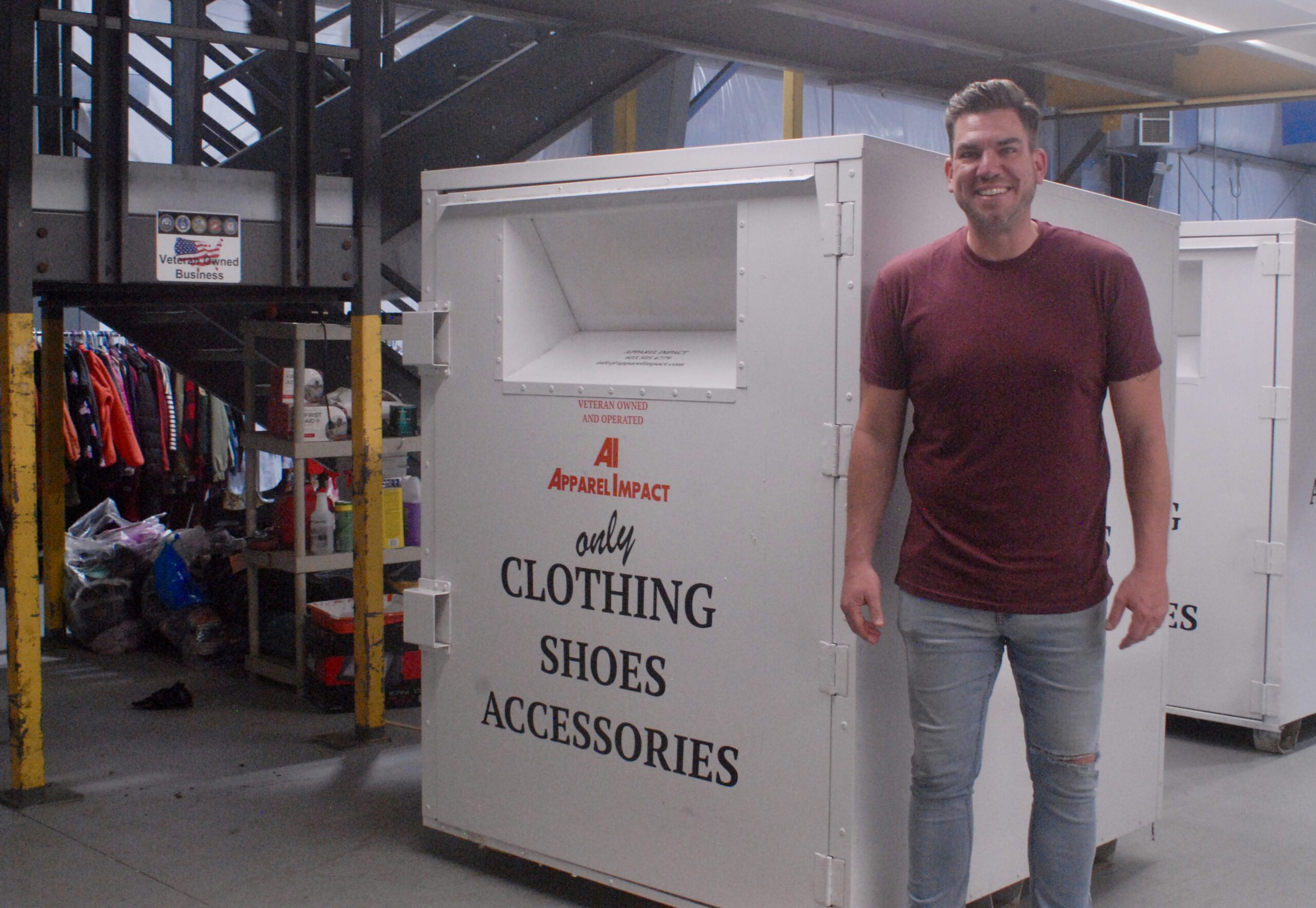Apparel Impact CEO
Joe Whitten

‘It’s really just about educating the next generation. We’re in a dire time right now not to pull the alarm,’ says Apparel Impact CEO Joe Whitten. ‘We’re still throwing our clothes out, so behavior needs to change.’ On a recent episode of NH Business Review’s “Down to Business” podcast, we got to speak with Joe Whitten, the co-founder and CEO of Apparel Impact. After spending a few years each at tech companies like Oracle, Comcast and Dyn, Whitten used his entrepreneurial skills and wherewithal to solve a problem that affects the entire globe: textile waste. Since its inception in 2014, Apparel Impact has diverted over 65 million items of clothing from entering the landfill, and also helped clothe well over 19,000 people globally.
Q. What is Apparel Impacts’ mission?
A. Apparel impact is basically the first step to diverting the fastest growing waste stream in the country. In 1991, textiles or clothing, shoes, accessories, linens, blankets were about 1% of total waste in the United States. In 2024, it’s approaching 10%.
The problem has actually grown worse, and it doesn’t seem to be slowing down at all, primarily because of fast fashion. It has really been happening for over a decade, when U.S. manufacturing companies and clothing manufacturers decided to ship jobs overseas for cheaper labor.
Because of that, and because the problem doesn’t seem to be going away, Apparel Impact and others exist to give people an opportunity to do something with their clothes. Right now, 85% of all clothes end up in the landfill. And it can take upwards of two to 400 years for one shirt to degrade, and it takes upwards of 750 gallons of water to make one white cotton T-shirt. So, there’s a lot of environmental hazards that come along with textiles and manufacturing.
Apparel Impact exists to give people the opportunity to divert the waste instead of throwing it out, put it in an Apparel Impact bin and recycle it or donate it. We then get it into the hands of organizations and companies that are experts in their field who can go through each piece and can sell it to a Goodwill in Pennsylvania who is short on plus-size men’s T-shirts and who needs a lot of them all at once. Or let’s get it into the hands of a vintage shop in New York City who really wants vintage T-shirts. Clothing graders are ones that can go through everything and determine its best use.
Q. We heard there’s an Apparel Impact comic book.
A. I loved “Captain Planet” growing up. When you look at the data today, 85% of all clothing ends up in the landfill buried in the ground. So, who are the people that are purchasing clothes? Adults. OK. So how do we change the behavior for future generations? Because it’s not getting any better.
Well, like everything else, we need to actually educate the next generation and understand that our clothes aren’t trash. We need to start thinking about them differently. Well, how do you do that in the least boring way possible? I didn’t think that maybe a textbook for younger generations was the way to go about it. I thought maybe an entertaining comic book would be the best way, and I feel as though our approach is working.
We just released the first issue a couple of months ago. It’s more of an introduction into the idea of recycling clothes and what happens to your clothes when you recycle them, and the negative aspects of what happens to your clothes when they’re buried in the ground. It’s an introduction to the superhero team, Team Impact, which includes Major Impact and Fleetfoot and Stitcher, and the bad guy, Dr. Toxic, is getting released in the next issue.
It’s really just about educating the next generation. We’re in a dire time right now not to pull the alarm, but in reality, we do need to pull the alarm fast. Fashion is getting worse. We’re still throwing our clothes out, so behavior needs to change. And I don’t really have that much faith in our generation today. I think if we at least introduce that idea to the next generation, we’ll probably see a difference. And I feel like Team Impact and the comic books are a way to do that.
Q. How do you wish Apparel Impact to grow in the next few years?
A. Last year, we reached 11 million pounds that we diverted from landfills. But it’s still not enough. By the end of 2026, I’d like that to be 30 million pounds. So that’s the goal as a company. What does that look like? It looks like about 1,500 to 2,000 additional locations in at least the six states that we’re in.
We have a huge community outreach aspect to our company. We clothe about 4,000 people a year for free. We’re very proud of that. Part of our goal is to grow that to reach 6,000 people in the next two years. Right now, we’re approaching 4,500.
Me personally, I’m constantly focused on growth. If you’re not trying to be the biggest and the best and the brightest, I don’t know why anyone would wake up in the morning, to be honest.
I just don’t relate with it. But that’s what I’m trying to do. I’m proud of the team, and I think everyone’s on the same page. Otherwise, they wouldn’t work for a crazy guy like me.
To read the full interview, visit nhbr.com.